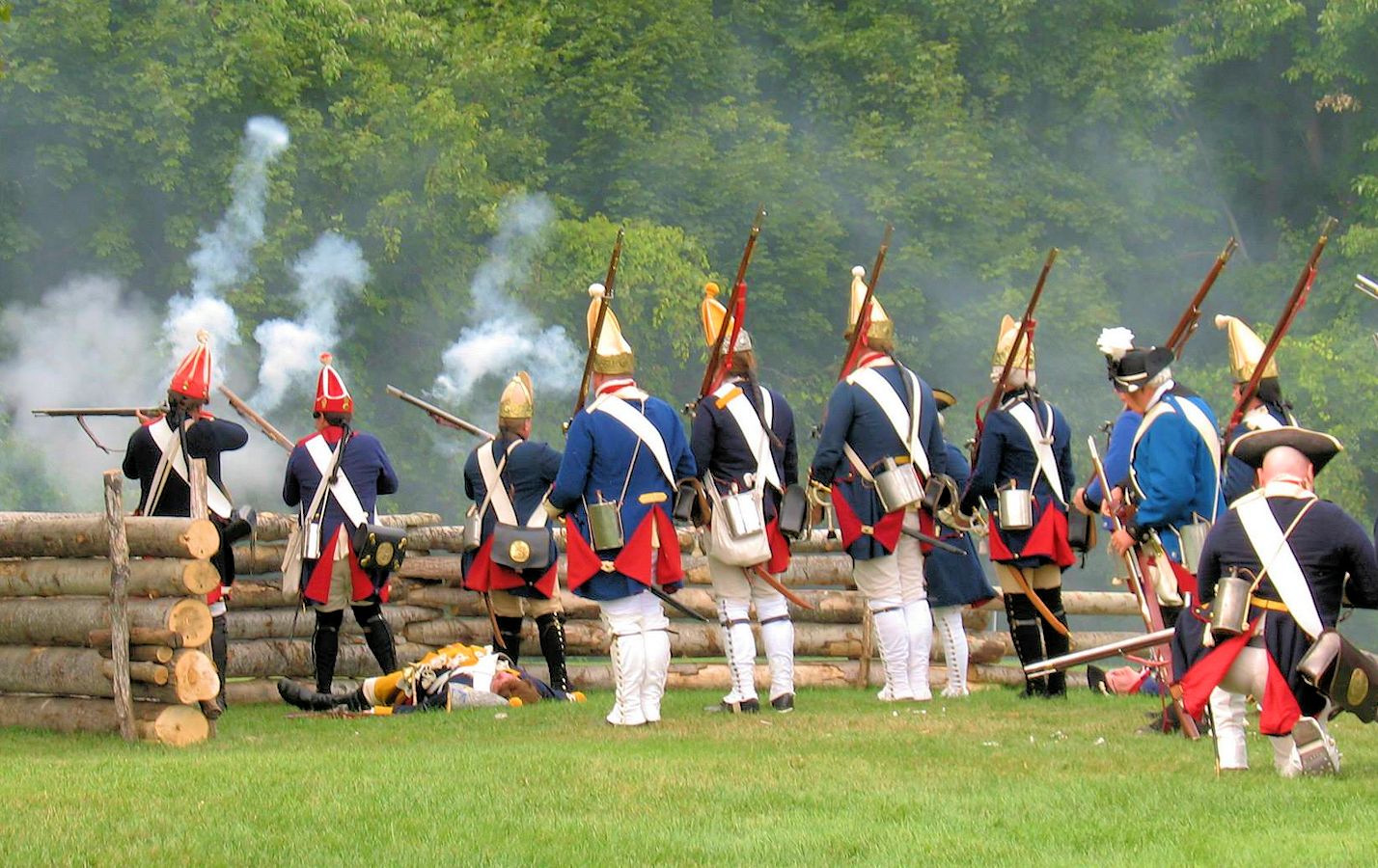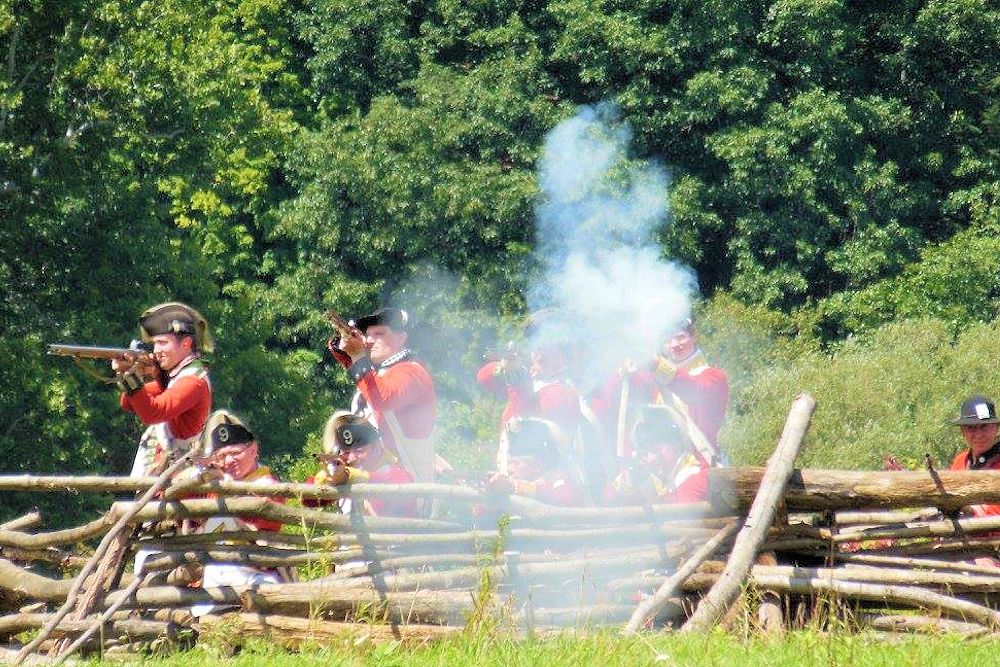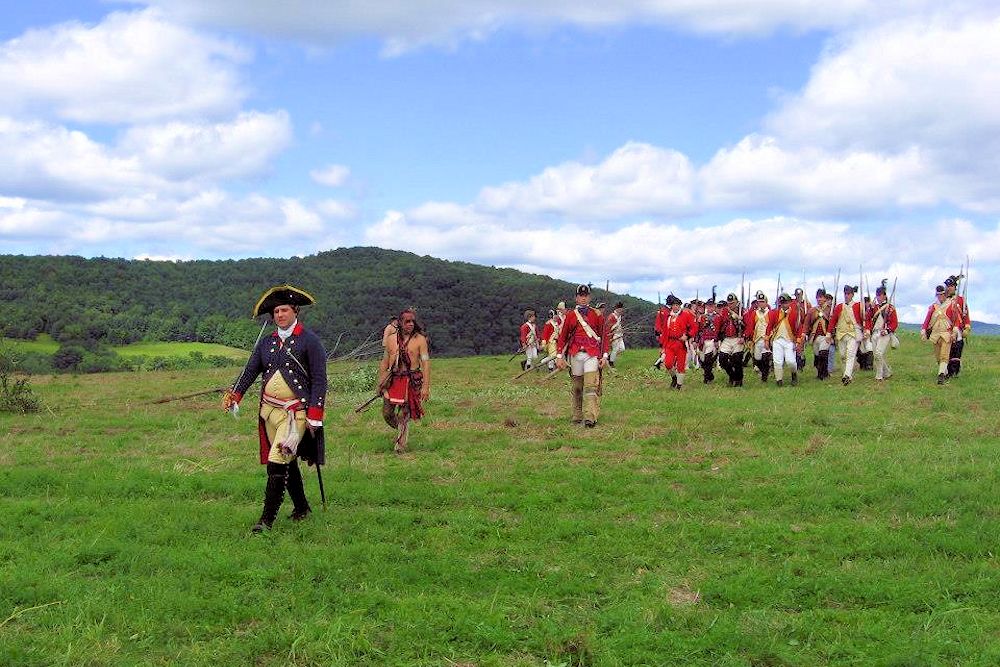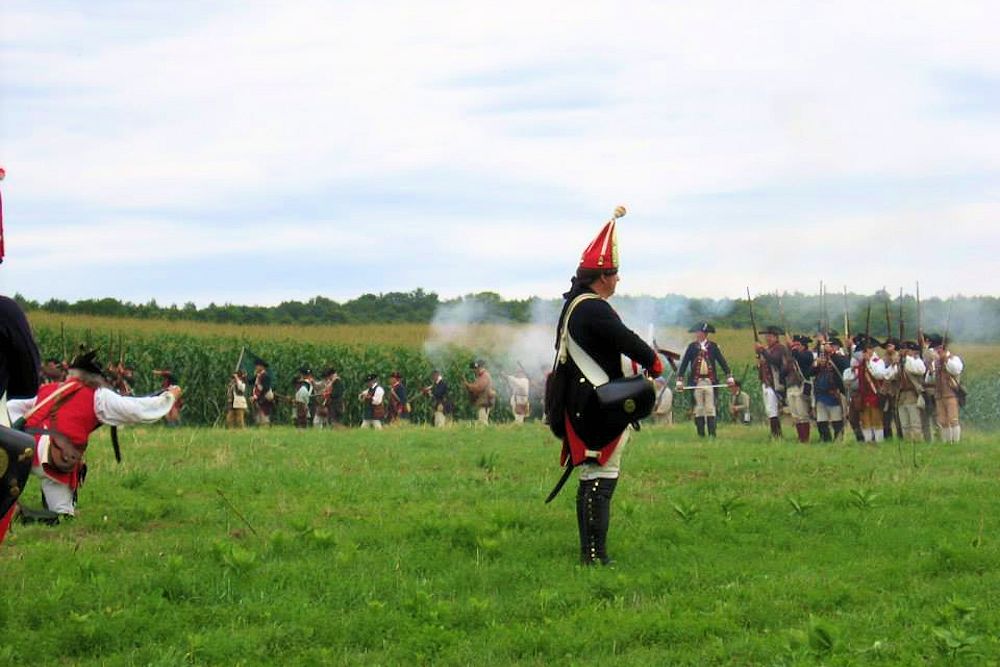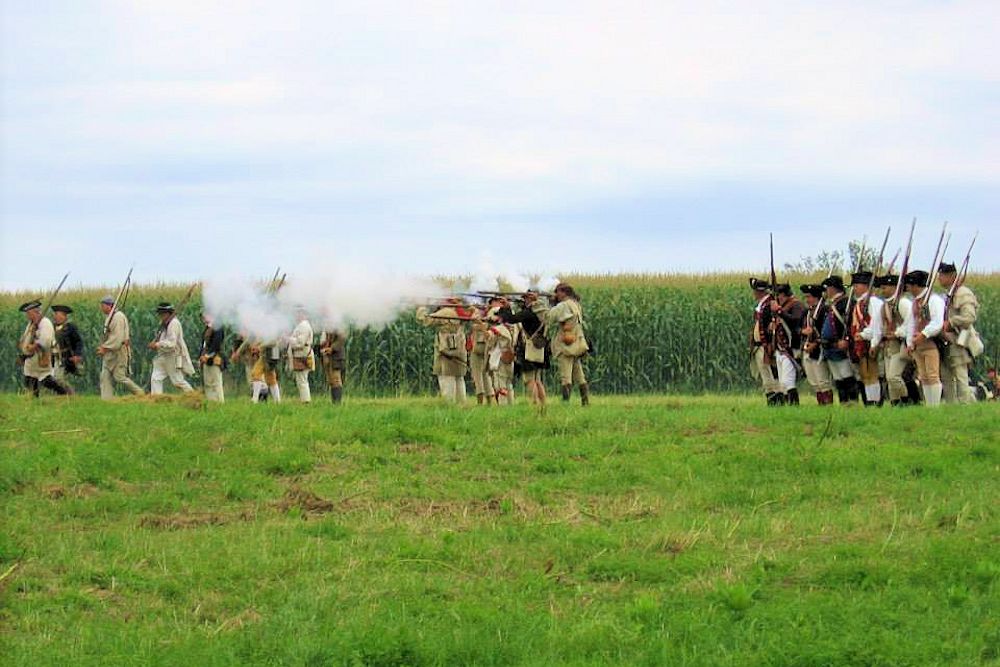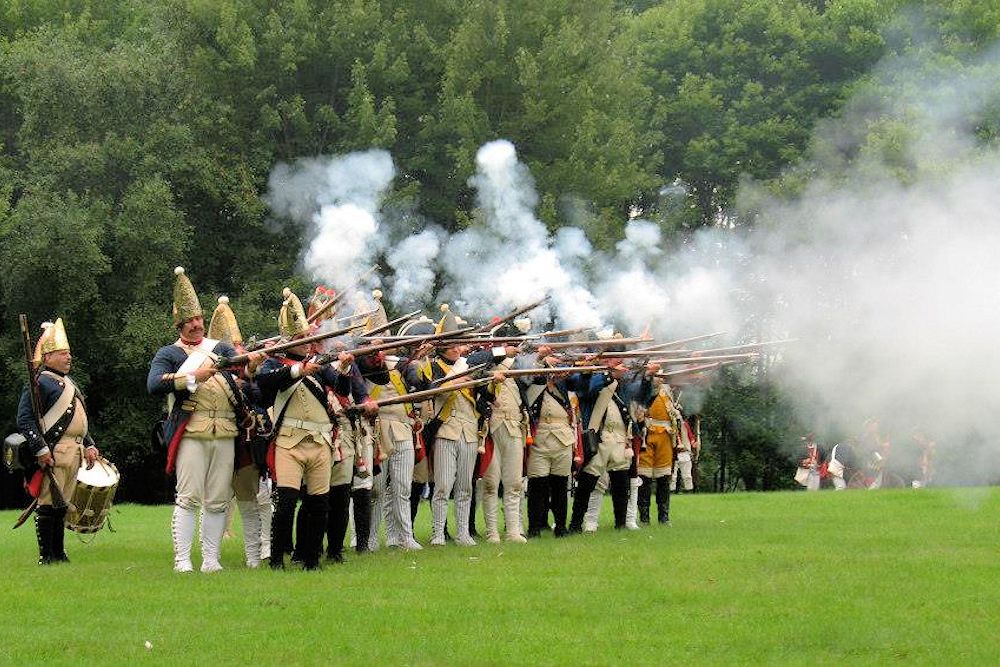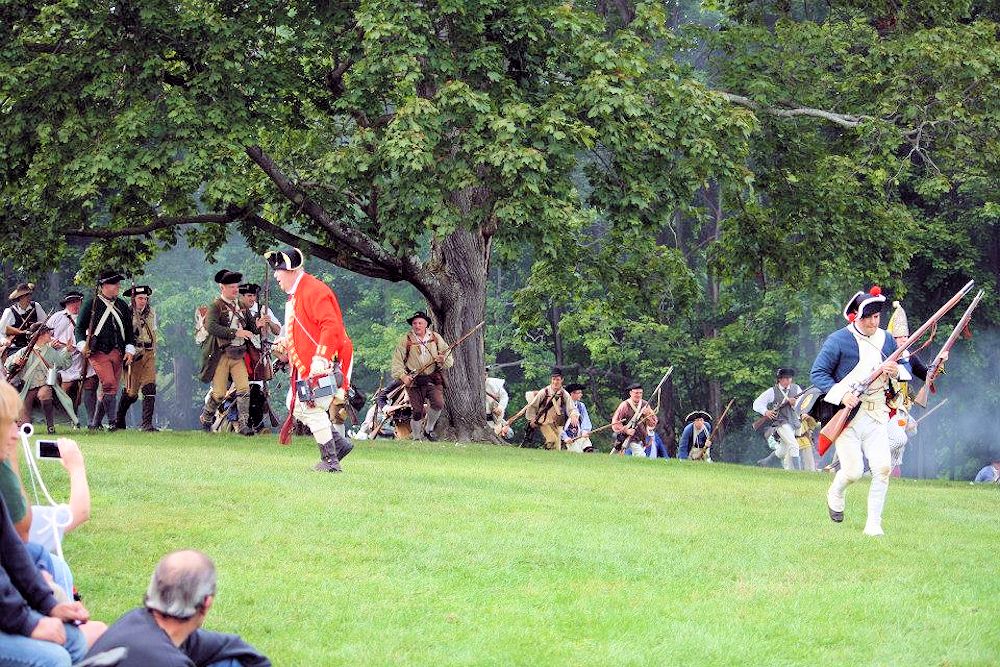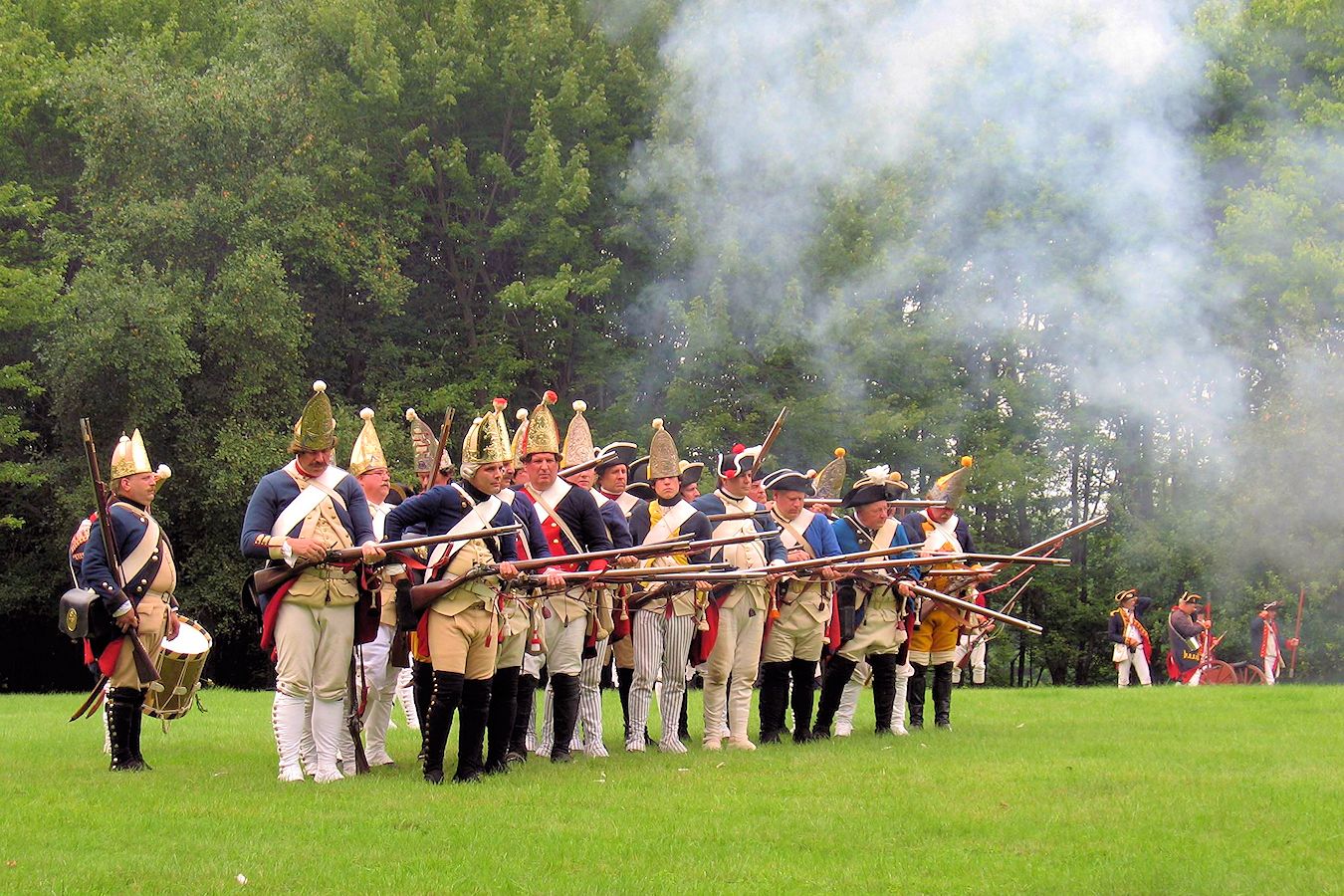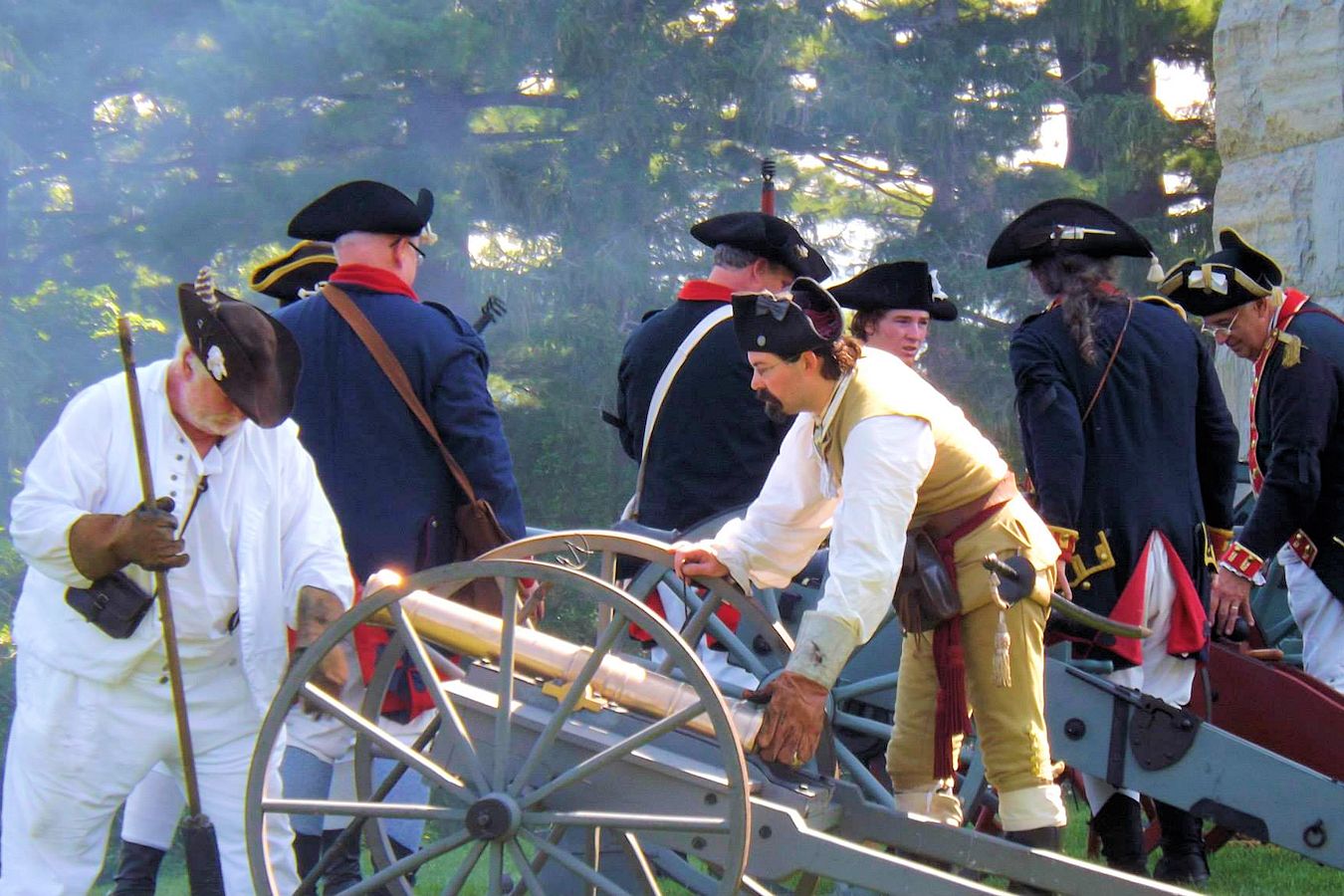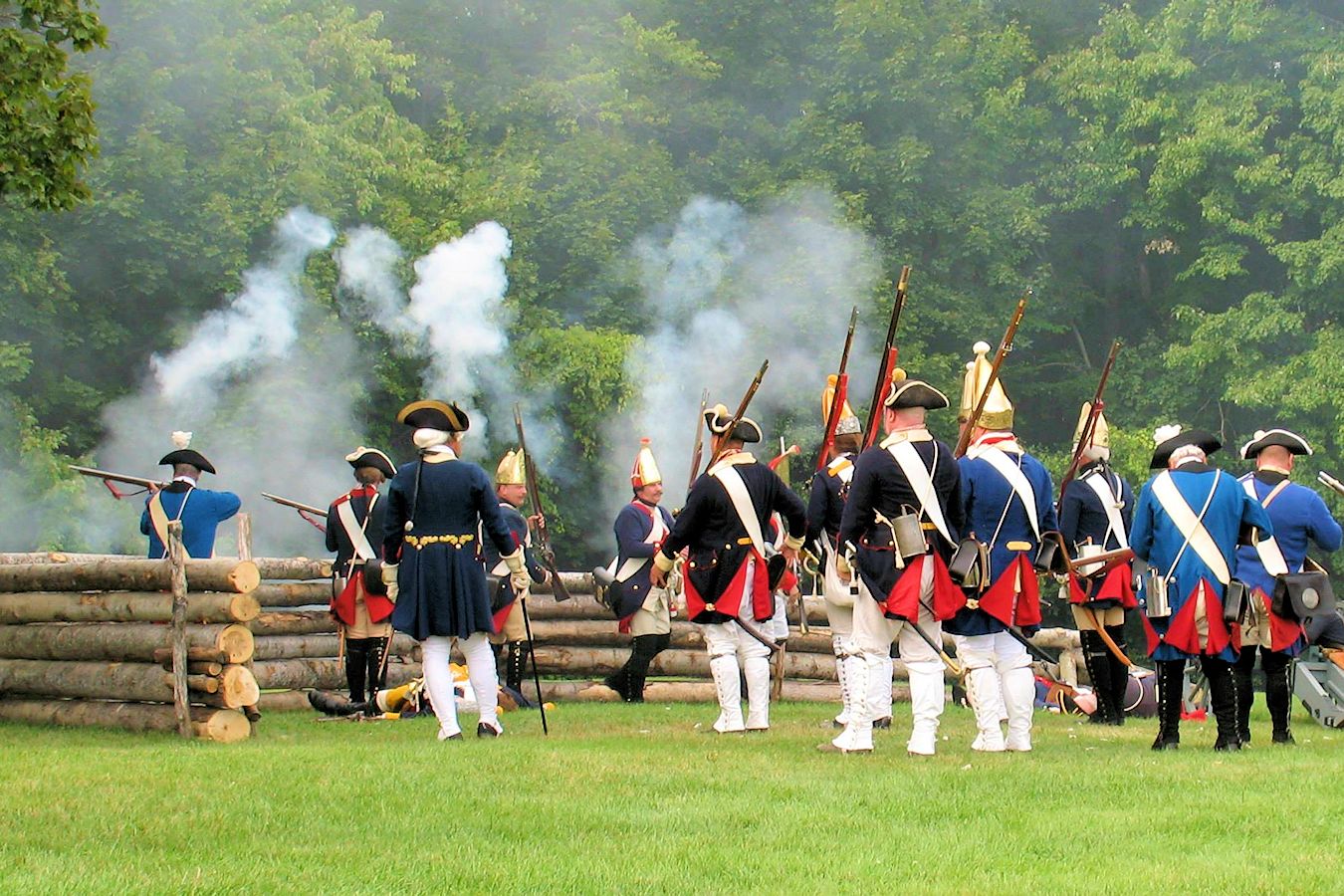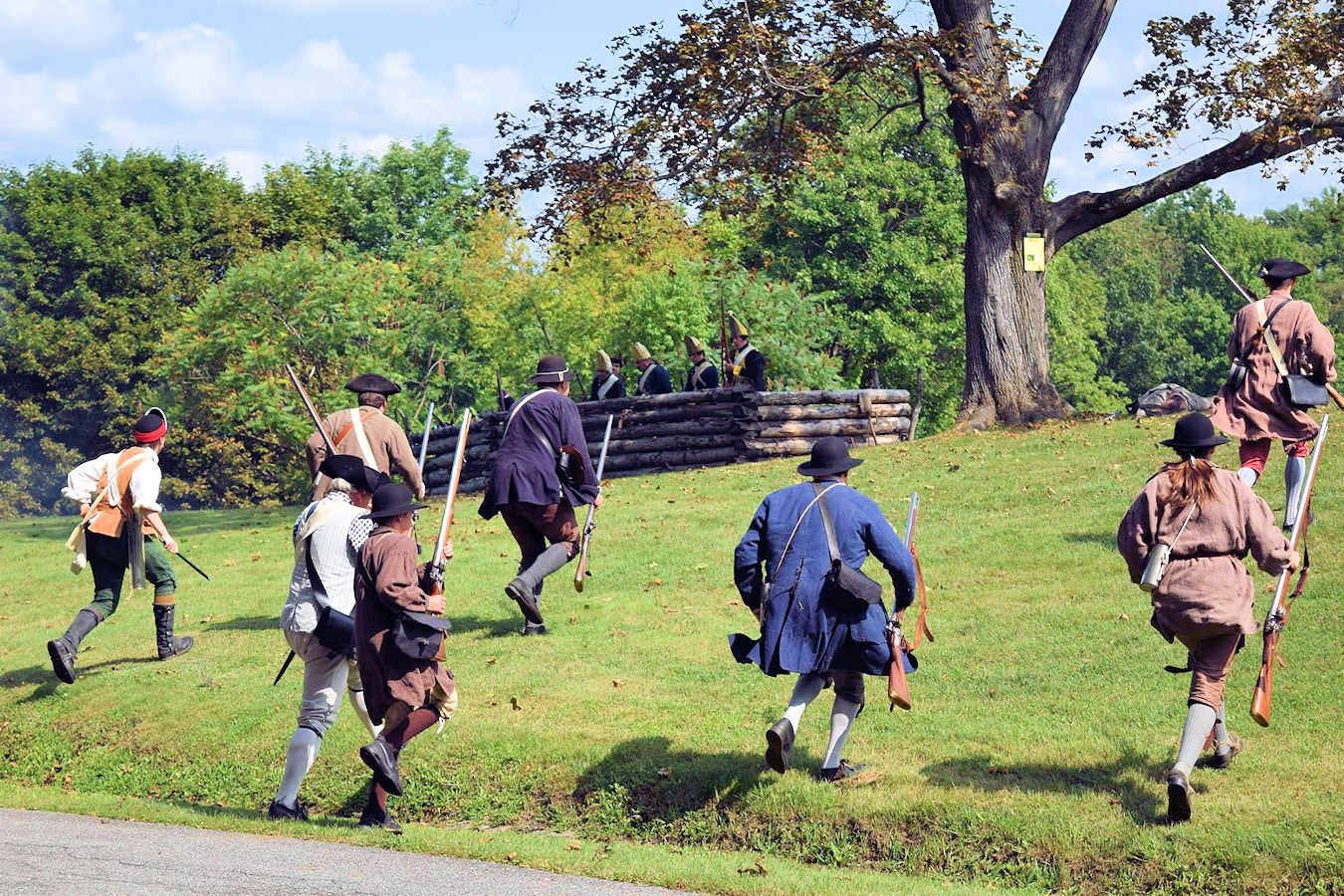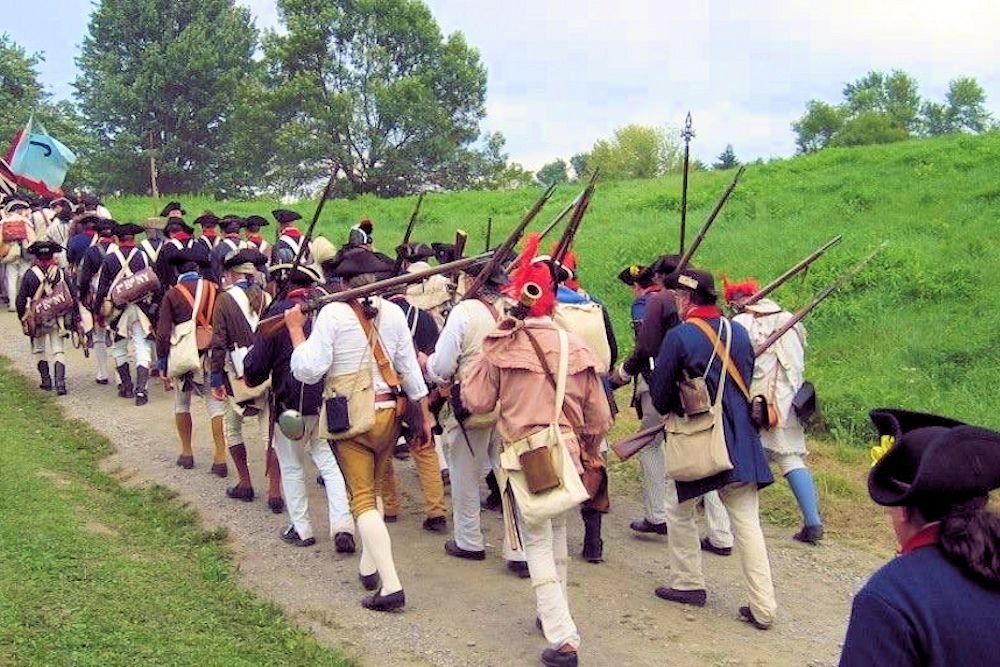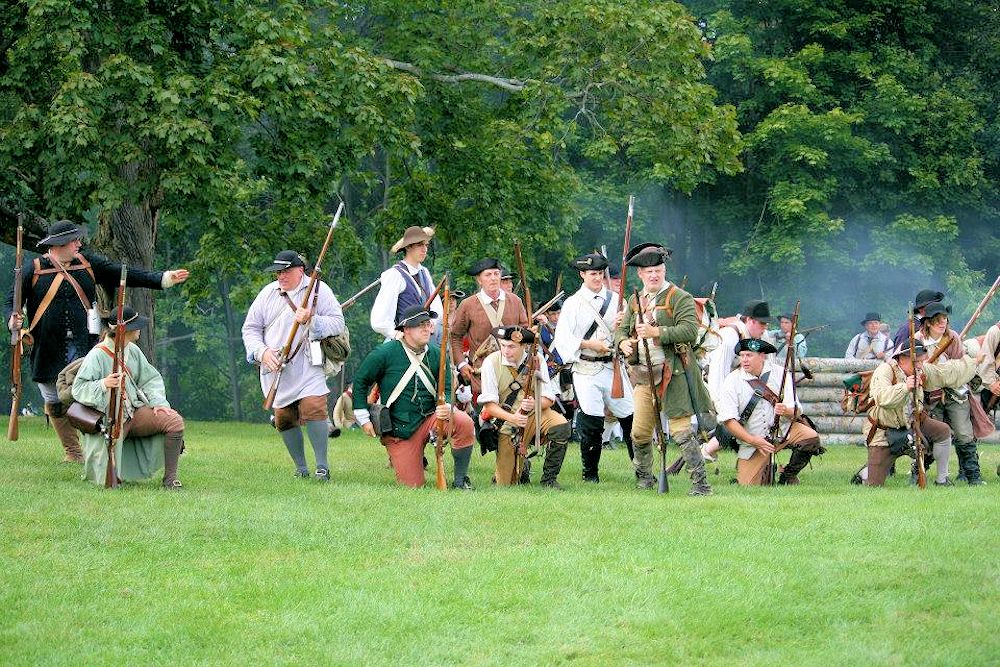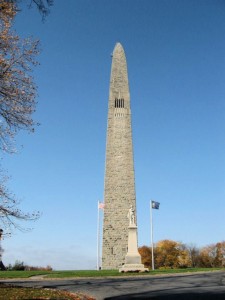2020 Battle of Bennington Reenactment (tentative)
Relive history at the annual Battle of Bennington Reenactment on August 8-9, 2020 (tentative) at the Bennington Battlefield in Walloomsac, New York. The Friends of the Bennington Battlefield will be hosting the 240th anniversary of the critical battle that set the stage for the Crown defeat at Saratoga. The Battle of Bennington Reenactment at the original site in town of Hoosick Falls, New York. The organization is working on a 2020 event. More details to come.
Watch history come to life as the nationally renowned living history organization the “Brigade of the American Revolution” recreates this turning point in our war for independence. In addition to the tactical reenactments, a full and exciting weekend of activities is scheduled. Visitors are encouraged to tour the camps and experience the sights and sounds of 1777.
Location
Bennington Battlefield State Historic Site
NY-67
Hoosick Falls, NY 12090
(518) 686-7109
For More Information:
Park Office: Call 518-279-1150
Event Coordinator Peter Schaaphok: Call 518-369-0910; Email [email protected]
The Battle of Bennington State Historic Site is located on Route 67 in Walloomsac, NY. The camps will be situated at the Barnet Homestead off of Cottrell Road, and will be open to the public from 11:00 to 3:00 pm both days. Saturday’s reenactments of the storming of the “Dragoon Redoubt” and the repulse of Breymann’s relief force will take place on the northern side of Route 67 at the top of the so-called “Hessian Hill” beginning at 4:00 pm. Sunday’s reenactments, including the Battle for the “Tory Fort” will take place on the southern side of route 67, adjacent to the Cottrell farm. All programs are free.
Battle of Bennington Reenactment Mini Gallery
Reenactor Rules & Registration
The Battle of Bennington Reenactment is restricted to member units in good standing of the BAR, BVMA, British Brigade & Continental Line. This is NOT an OPEN EVENT. No walk-ons. If you and/or your regiment are not members of the above organzation or have not been specifically invited and are not registered, do not come to the event.
ALL UNITS must register for the event using the form on this website [PDF]. Please print, fill out and return. The sooner you register, the better. Registrations must be received by July 31, 2017. If you think your unit will be attending it would very much help our planning if you could give us an early indication by emailing [email protected] with a rough estimate of your numbers. Reenactor details & Regitration.
Battle of Bennington Reenactment Action Overview
Attack on the Bragoon Fort: Saturday @ 3:00 p.m.
On Saturday, there will be reenactments of the attach on the Dragoon Fort and Breymann’s attempted relief. We will be using the log bulwark on the site of the Dragoon Fort and the rebels will attack this at 3:00 PM. At mid-day on Saturday for those on the rebel side who like long treks though rough country, we will duplicate Col. Benjamin Nichols’ flanking march from the American camp to the area of the Dragoon Breastwork.
Breymann’s Advance & Rebel Counter-Attack: Saturday @ 7:00 p.m.
At 7:00 p.m. on Saturday, we will reenact Breymann’s advance and the rebel counter-attack.
Reconstruct Tory Fort: Sunday @ 11:00 a.m.
On Sunday morning all those interested can help in reconstructing the Tory Fort. Material will be provided.
Stark’s attack on Baum: 11:00 a.m.
At 11:00 a.m. we will reenact Stark’s attack on Baum’s main position at the bridge over the Walloomsac. Then at 1:30 PM will will recreate the rebel attack on the Tory Fort.
The 18th Century camps will be located in one of the large fields beyond the Barnett House. Water, straw,firewood and necessaries will be provided for each camp.
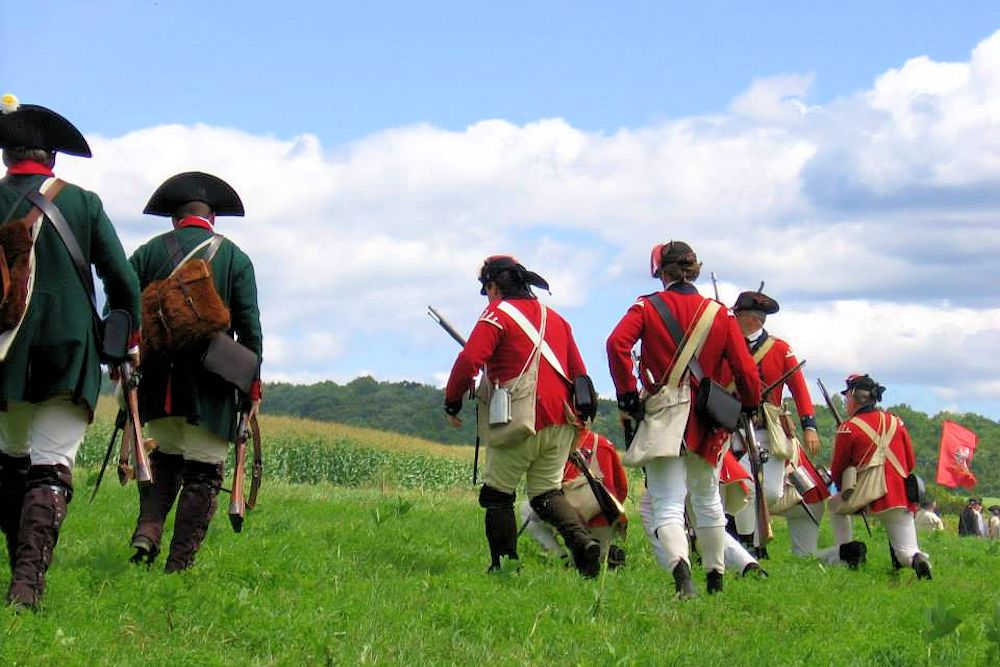
Battle of Bennington Reenactment Schedule
Friday
12:00 Noon – Registration desk Opens
12:00 Midnight – Registration closes
Saturday
7:00 AM – Registration opens
10:00 AM – Registration closes. Camps open to the public.
11:00 AM – S.A.R. Exhibit
11:30 AM – People of the Battle of Bennington
12:00 Noon – Lunch
2:00 PM – Troop formation and safety inspection
3:00 PM – Storming of the “Dragoon Redoubt”
3:45 PM – The Repulse of Breymann’s Relief Force
5:30 PM – Supper
11:00 PM – Tattoo, quite in the camps
Sunday
8:00 AM – Reveille
9:00 AM – Divine Services
9:30 AM – Start Construction of Tory Fort
10:00 AM – Camps open to public
10:30 AM – Troop formation and safety inspection
11:00 AM – Stark’s attack over the Walloomsac
12:00 Noon – Lunch
1:00 PM – Troop formation and safety inspection
2:00 PM –Battle for the Tory Fort
3:00 PM – Pass in Review
3:30 PM – Break Camp
Turning Point: Bennington leads to Saratoga and France joining America
Why is there such a large monument found thrusting upward from the green hills in a rural area of Vermont? It marks the place where a small force of Americans were in the right place at the right time to have an outsized negative effect on British General John Burgoyne’s campaign to split the northern colonies. This battle contributed to his subsequent loss at Saratoga, which was the event that helped Franklin convince France to join American in its battle against Britain.
From the beginning of the American Revolution, the British had understood the importance of gaining control of the Lake Champlain-Lake George-Hudson River water route to effectively cut off the colonies north of New York from those to the south. Almost all of the troubles leading to the war had originated from New England, and the British thought that if they could put down the rebellion there, the rest of the colonies would give up. British dominance of New York would also make it difficult or impossible for the Americans to move troops and supplies between the northern and southern colonies.
[su_accordion][su_spoiler title=”Read More about the importance of the Battle of Bennington”]The British make their first attempt to seize this waterway in 1776. The British army, under Gen. Sir William Howe, was successful in taking New York City and some of the lower Hudson Valley area. The force moving south from Canada under Gen. Sir Guy Carleton was stalled at Ft. Ticonderoga however, and forced to retreat due to the coming of winter. In 1777 Gen. John Burgoyne, who had been with the British force coming from Canada in ’76, proposed the plan be tried again, submitting “Thoughts for Conducting the War on the Side of Canada,” this time with himself in command. This paper was his attempt to strengthen the existing New York strategy and was soon approved by Lord Germain.
This plan became known to history as the Campaign of 1777. The plan called for Burgoyne to advance south from Canada, up to Lake Champlain, capture Ft. Ticonderoga, and then march south along the Hudson to Albany. There he would join Sir William Howe, who would advance north along the Hudson River from New York City, already under British control. Barry St. Leger would come as a third force, advancing west along the Mohawk River Valley. St. Leger’s Force was to act as a diversion, recruiting loyalists along the way and additionally securing a western water route between Canada and New York City. Howe, however, became engaged in a campaign to capture Philadelphia (a plan Lord Germain had also approved believing that American General Washington may become a hindrance to New York, and that Howe would be done in time to reach Burgoyne) and would never reach Albany. St. Leger became entangled in a futile 21-day siege of Fort Stanwix and was forced to retreat to Canada as American forces from the Albany area began to advance upon him. Burgoyne, however, was never informed in a timely manner of his colleagues’ setbacks and continued his march to Albany.
In July 1777, Fort Ticonderoga was lost by the Americans after British General John Burgoyne managed to place a cannon on Mount Defiance (looking down on Fort Ticonderoga) and force Ticonderoga’s garrison under General Arthur St. Clair to evacuate. After capturing Ticonderoga with ease and speed that shook patriot morale, Burgoyne continued his march south, defeating American troops at Hubbardton and forcing the evacuation of Forts Anne and Edward. Then his luck began to run out. A column of Hessians (German mercenaries) was sent by Burgoyne to raid Bennington for much needed supplies (horses for unmounted cavalry), draft animals, and food supply and forage). On August 16th, 1777, in a small hamlet of Hoosick, NY called Walloomsac, a rebel force of roughly 2000 men under the command of General John Stark, decisively defeated Burgoyne’s detachment of Germans, loyalists and native allies. This action diminished General Burgoyne’s army by 1000 men, prevented the capture of important supplies located in nearby Bennington, VT, and set the stage for the American victory at Saratoga.
Continuing southward, Burgoyne crossed near present-day Stillwater, where the Americans under Horatio Gates, had taken up position on Bemis Heights. Burgoyne tried to break through the American lines at Freeman’s Farm (Sept. 19) and at Bemis Heights (Oct. 7). Both attempts failed, and the British commander, finding himself outnumbered and surrounded and unable to retreat, surrendered on October 17, 1777.
Burgoyne’s defeat and surrender at Saratoga, coupled with the victory months prior at Fort Stanwix, lead directly to the alliances between the United States, France, and the Netherlands. These alliances helped to sustain the new United States throughout the rest of the war and directly contributed to the final victory and British surrender at Yorktown in 1781.
Burgoyne’s Campaign: June-October 1777
Turning Point: The Battle of Bennington
Battle of Bennington (from British Battles)
[/su_spoiler][/su_accordion]
Mark your calendar today so you don’t miss the next Battle of Bennington Reenactment at the Bennington Battlefield in Wallomsac, New York.
Tags: Battle of Bennington Reenactment, Battle of Wallomsac Reenactment, Bennington Battlefieldc


